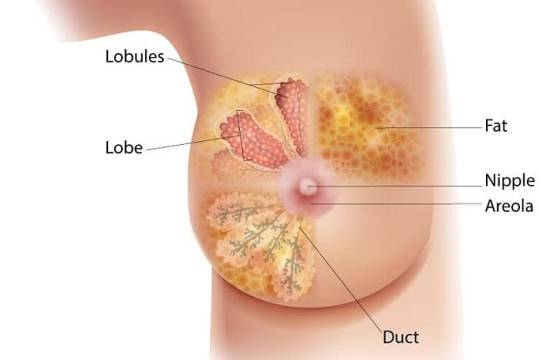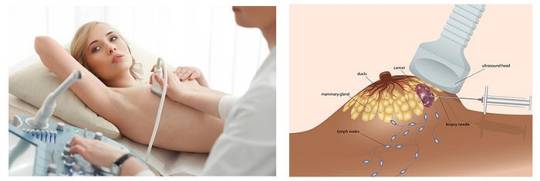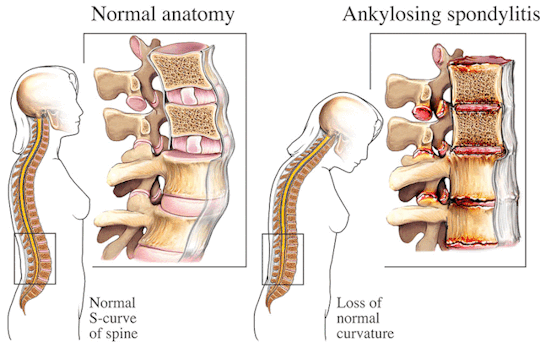#The Complementary Medical Association
Text
Des formations sur les filières émergentes.

Vous souhaitez vous orienter ou vous reconvertir ou vous devertir ?
Des formations sur les filières émergentes ou en forte évolution.
Parcourez les métiers qui recrutent, ou qui enrichissent votre savoir, ou tout simplement qui vous divertissent. Certainement vous trouverez le niche pouvant vous intéresser ! !
Nos formations sont accréditées par IPHM (International Practitioners of Holistic Medicine), CMA (The Complementary Medical Association) et le CPD (Centre of Excellence), ce qui signifie qu’elles ont été évaluées et reconnues sur le plan international. Elles ont été réalisées par des professionnels rigoureusement sélectionnés pour leurs compétences et leur soif de partage. Les informations et exercices pratiques qu’elles contiennent vous permettront d’évoluer vers votre propre objectif, qu’il soit personnel ou professionnel.
En savoir plus !
#filières émergentes#filières en forte évolution#International Practitioners of Holistic Medicine#The Complementary Medical Association#Centre of Excellence#formations
1 note
·
View note
Text
what haikyuu characters would major in at My College™ -secondary characters edition!-
i’m having a lot of fun with this :) i’m kind of just doing main side characters and ones i have a good idea for, but if you have a request, feel free to send a reply or ask!
oikawa - …spanish major with latin american & caribbean studies minor. sue me
iwaizumi - easy easy easy mr. iwaizumi hajime (27) athletic trainer is pre-med track biology major and i stand by that
kenma - easy this kid is computer science to a t, but he also minors in business administration (influence of kuroo)
kuroo - business administration with minors in chemistry (can’t disappoint everyone’s fanon career for him as a chemist) and media & communications (he is a sports promoter after all)
fukunaga - look did i just put him in here to say that he’d be part of one of the many comedy groups on my campus? yes absolutely. theater major.
bokuto - not even furudate knows what he went to college for, so i get to go a little crazy with this one. i like to believe he’s on the education track and majoring in english & creative writing. he’d be everyone’s favorite english teacher in high school.
akaashi - similar path as bokuto major in english & creative writing, with the complementary english literatures major or minor
konoha - hehe public health and chemistry major, looking to get his graduate degree in medical leadership (my pharmaceutical boy) he will also most likely go to pharmacology school post-grad
ushijima - he’s the rare student with only one major and one major only: environmental science.
tendou - hot take, but a chemistry major with a theater minor
semi - he is a musician, so i will give him our music major, but he is also a civil servant (yall ignore that a lot), so i give him political science or political economy & public policy
aone - physical science major with either a project management or supply chain management accelerated program worked in
futakuchi - there’s definitely sustainability studies in there, but interestingly, i’d also add physics
koganegawa - i’d say physical science major as part of the dual degree engineering program, adding in the innovation and entrepreneurship minor
kita - most definitely an environmental science and sustainability studies major with a religion studies minor :) (yes i know he specifically says he doesn’t really believe in the gods, but i can’t help but associate him with religion…) i think he’d also be interested in my college’s abroad trip to japan, which focuses on ecology and religion in japan (i really want to go on this trip…)
osamu - easy. business administration.
atsumu - maybe an interesting take, but i’d say psychology. the amount of psychological warfare he tries to use i think is enough explanation.
that’s all for now! let me know if there are more characters you’d like to know about ! i’m having a lot of fun with this so please send in requests 🙏
#haikyuu!!#haikyuu#oikawa tooru#iwaizumi hajime#kozume kenma#kuroo tetsurou#fukunaga shouhei#miya osamu#miya atsumu#miya twins#kita shinsuke#bokuto koutarou#akaashi keiji#konoha akinori#ushijima wakatoshi#tendou satori#semi eita#aone takanobu#futakuchi kenji#koganegawa kanji#my college au#haikyuu headcanons
61 notes
·
View notes
Text
"Severance" is one of those brillantly structrured shows that rewards the viewers who watch it a second time.
Knowing the major twists recontextualizes so many scenes, e.g., the initial conference room convos between Helly and Mark,






and generally enhances the viewing experience.
An example?
Notice the colors above: Helly's blue shirt, the green chairs.


Haven't read what the cinematographers, designers and decorators said about this, but green is a sign of faith. The different shades of green could have been used because of the way the corporate people deify the founders and formers CEOs.
They could have been used because green and blue are considered soothing colors in graphic design. Lumon is a medical company that wants to keep its innies docile and calm.
They could have been used because a lot of viewers associate green with numbers/computers,


e.g., "Matrix."


By the way, the two hexadecimal values at the bottom represent two different shades of green in RGB format.
Now, Helly-as-Helena-Eagan's dress and jewelry in the finale?


Blue and green.


Just like the Severance prototype James Eagan gave to Helena.

0x15DB4A and 0x0AEAFC aka green and blue.
More blue and green:

Probably belonged to the founder.
MRD and Optics? Green vs. blue.



And of course, Harmony:

Helly chooses "Defiant Jazz" during the MDE scene.
youtube
As the episodes go, she starts wearing other colors [moving further away from the company line], e.g., white, brown, but there's always something blue or green on her. The exception to the rule seems to be her MDE moment: a yellow dress.

All the other colors were chosen equally cleverly, but especially the reds.
It's no coincidence that Helena/Helly is a redhead, 'cause it's not the actress's natural hair color.


The complementary color of red? Green.
Green is generally used for the innies' lives. They are livestock after all.




Blue is associated with Lumon.
Red seems to be used for the outside world—or rather the knowledge of it.
There are many instances of red vs. blue imagery throughout the show, which are definitely references to the red/blue pill choice on the "Matrix":
Petey wearing a red/blue nightgown when he begins to hallucinate being in both places at the same time.
We can see that Mark's gray car is parked between a red one and a blue one.
Mark having a red fish and a blue one.
Mark wearing red in his blue-ish house.
While Mark is watching TV, his orange-red (orange is the complementary color of blue) fish is swimming in blue water. The blue-ish walls are contrasting Mark's red couch and one of his fish.
Ricken's book is red, 'cause it contains forbidden stuff. The company's book is blue.
When Dylan has his moment of enlightenment, he's wearing red. When he refuses to go along with the status quo, the screen is red.
Irving wears a lot of blue, because he's very resistant to the truth. When he sees the black paint under his nails, there's the red ball under his chair.
Helena in the gala dressed in blues and greens in contrast to her red hair.
Other significant uses of red:
Ms. Casey wearing red, 'cause she's different from the other innies.
Petey giving Mark a red card.
The ball the innies play with is red.
[clears throat] All that being said, please enjoy all colors and rewatches equally.
219 notes
·
View notes
Text
We have seen that in the West, the European witchcraze signaled the arrival of a new age of gynocidal processions. During that era the personifications of the Second Divine Person—the sons of god representing the Son of God— appeared on stage, forming the professional and corporate mystical mergers that required the massacre of "indigestible" women. In nineteenth-and twentieth-century America (and in other nations following American leadership) a further phase has been reached. This is the Age of the Holy Ghost and his ghostly representatives. The multiple holy ghosts of the Age of Gynecology (body-gynecologists and mind-gynecologists) follow the mythic model of the "Third Divine Person." We have seen in the First Passage that the original christian holy ghost was a mythic male mother, the spirtual single parent who impregnated Mary, the Totaled Woman. The latter was a reversal of the parthenogenetic goddess, who was thus reduced to a brainwashed receptacle/ rape victim.
In studying the sado-rituals of the gynecological holy ghosts, it is useful to recall some of the theological lore associated with their christian theological archetype. The holy ghost, the feminine member of the divine trinity, was known as "the Spirit"— the one who inspires, or breathes into the souls of the chosen. In the ideal transsexual world of christian myth, "he" manages not only to impregnate Mary physically, producing the "Incarnate Word," but also to fecundate the souls/ minds of the faithful, engendering "supernatural life" and inspiring them with "divine" ideas and images. It is important to realize the interconnection between these two aspects of the myth, for they are reflected in the emergence of the two classes of specialists "devoted" to women, that is, the body-gynecologists and the mind-gynecologists.
The various types of psychotherapists are the theologians of gynecology. These theologians and the specialized "ministering" physicians whom they legitimate represent the two complementary functions of the holy ghost. Both function to keep women supine, objectified, and degraded a condition ritually symbolized by the gynecologists stirrups and the psychiatrist’s couch. By their combined efforts, these specialists keep many women in the state of perpetual patients whose bodies and minds are constantly invaded by foreign objects—knives, needles, speculums, carcinogenic hormone injections and pills, sickening self-images, festering fixations, debilitating dogmas.*
It is significant that certain male-defined feminine qualities are attributed to the holy ghost of christian theology. Thus he is called Helper and Healer—which makes him an appropriate paradigm for the "helping professions." He is also known by the name Gift. The deceptiveness of such appellations is apparent to victims of theological/psychiatric/ gynecological "help," who have learned the truth of the slogan: There is no such thing as a free lunch.
* As we have seen, it is no coincidence that the establishment of gynecology was followed chronologically by the creation and spread of Freudian ideology and its offspring. The medical establishment soon found that its colonization of women's bodies required the concomitant conquest of their minds/spirits. The new theology of therapy has fulfilled this role, extending its tentacles into the privacy of minds and hearts.
-Mary Daly, Gyn/Ecology
#mary daly#female oppression#western civilization#patriarchal religion#therapy is a scam to keep women docile
7 notes
·
View notes
Text
Breast Cancer

Introduction
Breast cancer, a multifaceted and prevalent disease, poses a significant health challenge globally, transcending gender lines with its potential impact. Characterized by the abnormal proliferation of cells within breast tissue, breast cancer’s complex etiology remains an area of intense study and concern. Despite notable advancements in medical science and increased awareness, it continues to be a leading cause of morbidity and mortality worldwide. This comprehensive discussion aims to delve into the intricacies of breast cancer, encompassing its causes, risk factors, prevention strategies, diagnostic modalities, treatment options, and the evolving landscape of supportive care.
Causes and Risk Factors

Understanding the underlying causes and risk factors associated with breast cancer is paramount in developing effective prevention and management strategies. While the precise etiology of breast cancer remains elusive, various genetic, hormonal, environmental, and lifestyle factors contribute to its onset and progression. Genetic predispositions, such as mutations in the BRCA1 and BRCA2 genes, significantly elevate the risk of developing breast cancer. Additionally, hormonal influences, including early onset of menstruation, late menopause, and hormone replacement therapy, play a crucial role in disease pathogenesis. Lifestyle factors such as excessive alcohol consumption, obesity, lack of physical activity, and exposure to environmental carcinogens further augment the risk profile.
Preventive Measures

Empowering individuals with knowledge about preventive measures is essential in mitigating the burden of breast cancer. Promoting regular breast self-examinations, clinical breast examinations, and mammographic screenings facilitates early detection and intervention. Emphasizing lifestyle modifications, including maintaining a healthy weight, adopting a balanced diet rich in fruits and vegetables, limiting alcohol intake, and engaging in regular physical activity, can reduce the risk of breast cancer. For individuals with a heightened risk due to genetic predispositions or familial history, prophylactic surgeries, such as mastectomy or oophorectomy, and chemo preventive agents offer viable preventive options.
Diagnostic Modalities

Advances in diagnostic modalities have revolutionized the early detection and diagnosis of breast cancer, enabling prompt initiation of treatment and improved clinical outcomes. Mammography remains the cornerstone of breast cancer screening, capable of detecting abnormalities such as microcalcifications, masses, or architectural distortions. Complementary imaging techniques, including ultrasound, magnetic resonance imaging (MRI), and molecular breast imaging (MBI), enhance diagnostic accuracy, particularly in women with dense breast tissue or high-risk profiles. Biopsy procedures, such as core needle biopsy or surgical excision, facilitate histopathological examination, enabling precise diagnosis and classification of breast lesions.
Treatment Options

Tailoring treatment strategies to individual patient characteristics and disease parameters is essential in optimizing therapeutic outcomes in breast cancer. The treatment landscape encompasses a multidisciplinary approach, integrating surgical, medical, and radiation oncology interventions. Surgical options range from breast-conserving surgeries, such as lumpectomy or segmental mastectomy, to radical procedures like total mastectomy or modified radical mastectomy, depending on tumor size, location, and extent of spread. Adjuvant therapies, including chemotherapy, hormonal therapy, targeted therapy, and immunotherapy, aim to eradicate residual disease, prevent recurrence, and improve overall survival. Radiation therapy, administered either postoperatively or as a primary modality in selected cases, targets residual tumor cells, minimizing locoregional recurrence rates.
Supportive Care and Survivorship

Recognizing the holistic needs of breast cancer patients and survivors is integral in promoting comprehensive care and ensuring optimal quality of life. Supportive care interventions, including symptom management, psychosocial support, nutritional counseling, and rehabilitation services, address the multifaceted challenges associated with cancer diagnosis and treatment. Survivorship programs, focusing on survivorship care planning, surveillance for recurrence, long-term monitoring of treatment-related complications, and health promotion initiatives, facilitate the transition from active treatment to survivorship. Engaging patients and caregivers in survivorship care planning fosters empowerment, resilience, and a sense of agency in navigating the post-treatment phase.
Conclusion
In conclusion, breast cancer represents a formidable health challenge with profound implications for affected individuals, families, and communities worldwide. While significant strides have been made in understanding its pathophysiology, enhancing diagnostic capabilities, and expanding treatment options, concerted efforts are warranted to address existing gaps in prevention, early detection, and access to care. By fostering collaborative partnerships among stakeholders, advocating for evidence-based interventions, and promoting health equity, we can strive towards a future where breast cancer incidence and mortality rates are substantially reduced. Through continued innovation, education, and advocacy, we can transform the landscape of breast cancer care, offering hope, support, and healing to those impacted by this pervasive disease.
We wish you all the best in your medical education journey. In case you need any guidance or assistance during the learning process, do not hesitate to reach out to us.
Email at;
#fullmetal alchemist#healthcare#medical students#assignment help#puppies#aesthetic#ratblr#kittens#pets#plants#nursing student#nurse#nursing school#home nursing services#doctor who#fourteenth doctor#14th doctor#tenth doctor#medicine#medication#pharmacy#big pharma#pharmacy colleges#pharmacy student#pharmacy services#pharmacy school#pharmacy technician#health and wellness
9 notes
·
View notes
Text
The Role of Yoga and Ayurveda in Diabetes Management
Healing from Within: The Role of Yoga and Ayurveda in Diabetes Management
Step into a world where ancient wisdom meets modern science as we explore the profound impact of yoga and Ayurveda on diabetes management. In an era of escalating stress and sedentary lifestyles, the holistic approach of these ancient practices offers a beacon of hope in the management of diabetes. Through targeted postures, breathwork, and meditation, yoga unfolds its therapeutic benefits, promoting insulin sensitivity and reducing blood sugar levels. Meanwhile, Ayurveda, with its personalized approach, delves into herbal remedies, dietary modifications, and lifestyle recommendations to restore the body's balance and vitality. As we delve into the nexus of these time-honored practices and the contemporary understanding of diabetes, discover how their integration can empower individuals to embark on a transformative journey towards holistic well-being. Join us as we unravel the compelling synergy between ancient traditions and modern diabetes management, offering a roadmap for self-healing from within.
Understanding Diabetes and its Management
Diabetes is a chronic condition characterized by high levels of glucose in the blood. It can result from inadequate insulin production, ineffective use of insulin, or both. The management of diabetes involves controlling blood sugar levels to prevent complications. Conventional treatments often include medication, insulin injections, and dietary modifications. However, the holistic approach of yoga and Ayurveda offers complementary avenues for managing diabetes. By understanding the underlying causes and impacts of diabetes, individuals can make informed choices about incorporating these ancient practices into their lifestyle.
Yoga and Ayurveda offer a holistic perspective on diabetes, considering the interconnectedness of mind, body, and spirit. Rather than simply treating the symptoms, they address the root causes of imbalance, aiming to restore harmony and well-being. As we delve deeper into the specific practices and principles of yoga and Ayurveda, we will uncover their profound potential in transforming the lives of those grappling with diabetes.
Yoga Practices for Diabetes Management
Yoga, an ancient practice originating in India, encompasses a diverse range of techniques designed to promote physical, mental, and spiritual well-being. When tailored for diabetes management, yoga practices can play a crucial role in regulating blood sugar levels and enhancing overall health. Asanas, or yoga postures, are a fundamental aspect of yoga practice. Specific asanas, such as the Sun Salutation (Surya Namaskar), the Shoulder Stand (Sarvangasana), and the Seated Forward Bend (Paschimottanasana), have been found to be particularly beneficial for individuals with diabetes.
In addition to asanas, pranayama, or breath control techniques, are integral to yoga practice. Deep breathing exercises, such as Anulom Vilom (alternate nostril breathing) and Kapalbhati (skull shining breath), can help improve insulin sensitivity and reduce stress levels, both of which are essential for managing diabetes. Furthermore, meditation and relaxation techniques in yoga can alleviate the psychological and emotional stress associated with diabetes, promoting a sense of calm and balance.
Ayurvedic Approach to Diabetes
Ayurveda, often referred to as the "science of life," is an ancient system of medicine that originated in India over 5,000 years ago. Central to Ayurveda is the concept of individual constitution, or dosha, which influences one's physical, mental, and emotional characteristics. In the context of diabetes, Ayurveda emphasizes the balance of the three doshas – Vata, Pitta, and Kapha – to manage the condition effectively. Ayurvedic treatments for diabetes typically involve a combination of herbal remedies, dietary modifications, and lifestyle recommendations tailored to an individual's doshic constitution.
Herbs such as bitter melon (Momordica charantia), fenugreek (Trigonella foenum-graecum), and turmeric (Curcuma longa) are commonly used in Ayurveda to regulate blood sugar levels and improve insulin sensitivity. Additionally, dietary guidelines in Ayurveda emphasize the consumption of whole foods, such as whole grains, legumes, and fresh vegetables, while minimizing the intake of processed and sugary foods. Lifestyle modifications, including stress-reducing practices, regular exercise, and adequate sleep, are also integral to the Ayurvedic approach to managing diabetes.
Benefits of Yoga and Ayurveda for Diabetes
The integration of yoga and Ayurveda into diabetes management offers a myriad of benefits beyond the regulation of blood sugar levels. These ancient practices promote overall well-being by addressing the physical, mental, and emotional aspects of health. Yoga and Ayurveda can enhance insulin sensitivity, promote weight management, reduce inflammation, and improve cardiovascular health – all of which are crucial considerations for individuals with diabetes.
Moreover, the holistic nature of yoga and Ayurveda fosters a sense of empowerment and self-awareness, allowing individuals to develop a deeper understanding of their bodies and the factors influencing their health. By incorporating these practices into their daily routine, individuals can cultivate resilience, balance, and vitality, ultimately enhancing their ability to manage diabetes effectively and lead a fulfilling life.
Incorporating Yoga and Ayurveda into Daily Routine
The integration of yoga and Ayurveda into daily routines can be a transformative endeavor for individuals seeking to manage diabetes holistically. Establishing a regular yoga practice, even if it involves just a few minutes of gentle stretching and breathing exercises each day, can yield significant benefits. Similarly, incorporating Ayurvedic dietary principles, such as mindful eating, balanced meals, and the inclusion of diabetes-friendly herbs and spices, can contribute to better blood sugar control and overall health.
Furthermore, the incorporation of mindfulness and stress-reducing techniques, such as meditation and relaxation exercises, can help individuals develop resilience in the face of the challenges posed by diabetes. By making these practices a part of their daily routine, individuals can experience a profound shift in their well-being, fostering a sense of empowerment and self-healing from within.
Dietary Recommendations in Ayurveda for Diabetes
Diet plays a pivotal role in the management of diabetes, and Ayurveda offers valuable insights into dietary recommendations tailored to individual constitutions. The emphasis on whole, unprocessed foods, as well as the inclusion of specific herbs and spices, can contribute to better blood sugar control and overall health. In Ayurveda, dietary guidelines for diabetes revolve around balancing the doshas, promoting digestion, and managing excess sugar in the body.
For individuals with diabetes, incorporating foods that are naturally low in glycemic index, such as leafy greens, bitter gourds, and whole grains, can help regulate blood sugar levels. Additionally, Ayurvedic principles advocate mindful eating, emphasizing the importance of savoring each meal, chewing food thoroughly, and being attuned to one's body's hunger and satiety cues. By aligning dietary choices with the principles of Ayurveda, individuals with diabetes can optimize their nutritional intake and support their overall well-being.
Case Studies and Success Stories
The profound impact of yoga and Ayurveda on diabetes management is exemplified by numerous case studies and success stories. Individuals who have integrated these ancient practices into their daily lives have reported improvements in blood sugar control, reduced dependence on medications, and an enhanced sense of well-being. From gentle yoga postures to personalized Ayurvedic regimens, these individuals have experienced a transformative shift in their relationship with diabetes, empowering them to take charge of their health and lead fulfilling lives.
These success stories serve as a testament to the potential of yoga and Ayurveda in diabetes management, inspiring others to explore these holistic avenues for well-being. By sharing these experiences, we can illuminate the path for individuals seeking alternative approaches to managing diabetes, offering them hope and guidance in their journey towards self-healing.
The Science Behind Yoga and Ayurveda for Diabetes
While the therapeutic benefits of yoga and Ayurveda for diabetes have been widely acknowledged, the scientific understanding of their mechanisms continues to evolve. Research studies have demonstrated the positive impact of yoga on insulin sensitivity, glucose metabolism, and stress reduction in individuals with diabetes. Similarly, clinical trials investigating the efficacy of Ayurvedic herbal formulations and dietary interventions have shown promising results in managing blood sugar levels and mitigating the complications associated with diabetes.
The convergence of modern scientific research and ancient wisdom provides a compelling foundation for the integration of yoga and Ayurveda into diabetes management. By bridging the gap between traditional practices and contemporary evidence, individuals and healthcare professionals can gain a deeper understanding of the multifaceted benefits of these holistic approaches, paving the way for their wider adoption in the management of diabetes.
Conclusion
In conclusion, the integration of yoga and Ayurveda offers a holistic and empowering approach to diabetes management. By incorporating targeted yoga practices, breathwork, meditation, herbal remedies, dietary modifications, and lifestyle recommendations, individuals with diabetes can embark on a transformative journey towards holistic well-being. The profound synergy between ancient traditions and modern diabetes management illuminates a path for self-healing from within, empowering individuals to cultivate resilience, balance, and vitality. As we continue to unravel the compelling nexus of yoga, Ayurveda, and diabetes management, we pave the way for a future where ancient wisdom and modern science converge to enhance the well-being of individuals worldwide.
6 notes
·
View notes
Text
A Book Home Doctor
In an era where self-sufficiency and empowerment are paramount, the concept of taking charge of one’s health and well-being has gained significant traction. The book “Home Doctor” emerges as a beacon of guidance, offering readers an invaluable resource to navigate the world of DIY health care. In this article, we delve into the essence of the book, its significance, and the benefits it bestows upon those seeking to become proactive stewards of their health.
Empowerment through Knowledge
“Home Doctor” is more than just a book; it’s a compendium of knowledge designed to equip individuals with the tools they need to handle common health issues within the confines of their own homes. Written by medical experts and seasoned practitioners, this comprehensive guide offers readers insights into identifying, understanding, and treating a wide array of ailments.
By demystifying medical jargon and presenting information in an accessible manner, the book empowers readers to make informed decisions about their health. From basic first aid and minor injuries to managing chronic conditions, “Home Doctor” covers a diverse range of topics that cater to individuals of varying medical literacy levels.
A Holistic Approach
One of the book’s strengths lies in its emphasis on a holistic approach to health care. It recognizes that well-being extends beyond the physical realm and encompasses mental, emotional, and spiritual aspects. “Home Doctor” advocates for preventive measures, healthy lifestyle choices, and stress management techniques, all of which contribute to a well-rounded approach to health maintenance.
Moreover, the book acknowledges the role of alternative and complementary therapies, supplementing conventional medical advice with insights into natural remedies, herbal medicine, and mindfulness practices. This well-rounded approach resonates with readers who value a comprehensive understanding of health.
Navigating a Changing Landscape
The landscape of health care is evolving, with an increasing emphasis on patient autonomy and self-care. “Home Doctor” aligns seamlessly with this shift, enabling individuals to take control of their health in a responsible and informed manner. As medical costs rise and access to professional care becomes more complex, the book emerges as a timely solution for addressing minor health concerns independently.
However, it’s essential to note that “Home Doctor” is not a replacement for professional medical advice, especially in cases of serious illnesses or emergencies. Instead, it complements the existing medical system by providing readers with the knowledge to assess situations, make informed decisions, and seek professional help when necessary.
Benefits of “Home Doctor”
The advantages of embracing the principles outlined in “Home Doctor” are multifaceted:
Cost-Effective: By being equipped to handle minor health issues at home, individuals can save on medical costs associated with routine visits to healthcare providers.
Empowerment: Knowledge is empowering. The book instills confidence in readers to manage health matters effectively, reducing anxiety and uncertainty.
Proactive Health Management: Prevention is better than cure. The book promotes healthy habits and preventive measures, reducing the likelihood of future health complications.
Resource for Caregivers: “Home Doctor” is a valuable resource for caregivers looking after family members or loved ones, offering guidance on managing common health concerns.
Immediate Accessibility: In situations where professional help might not be readily available, the book equips readers to respond promptly to health issues.
Conclusion
“Home Doctor” transcends the boundaries of a conventional medical guide. It signifies a paradigm shift in how individuals approach their health, fostering a sense of responsibility and empowerment. With its comprehensive insights, holistic approach, and focus on informed decision-making, this book is poised to become an indispensable tool for those seeking to lead healthier, more self-reliant lives. As we navigate an ever-evolving healthcare landscape, “Home Doctor” stands as a testament to the potential of knowledge and individual agency in promoting well-being.
Are you ready to embark on a journey towards empowered health management? “Home Doctor” is your guide to understanding, preventing, and addressing common health concerns from the comfort of your own home. Don’t miss out on the opportunity to:
Empower Yourself: Gain the knowledge and confidence to make informed decisions about your health and well-being.
Save on Costs: Learn how to handle minor health issues at home, reducing unnecessary medical expenses.
Promote Preventive Health: Discover holistic approaches and proactive measures that contribute to a healthier lifestyle.
Become a Resourceful Caregiver: Equip yourself with valuable insights for taking care of your loved ones’ well-being.
Respond Swiftly: Be prepared to tackle health concerns even when professional help is not immediately available.
Unleash the power of knowledge and take the reins of your health journey. Grab your copy of “Home Doctor” and embark on a path towards healthier living today!
Remember, while “Home Doctor” empowers you to manage common health issues independently, always seek professional medical help for serious illnesses or emergencies. Your well-being is in your hands — take the first step towards a healthier, more self-reliant future now!
7 notes
·
View notes
Photo

Scientists integrate two-dimensional materials into silicon microchips for advanced data storage and computation
Two-dimensional materials are expected to revolutionize the semiconductor industry. However, despite multiple studies that have reported prototype devices with promising properties for sensing and driving electrical current, their technology readiness level is still very low because they mostly use synthesis and processing methods that are incompatible with industry, create the large devices on unfunctional substrates, and present poor variability and yield.
A team of scientists at King Abdullah University of Science and Technology (KAUST) led by Dr. Mario Lanza, associate professor of materials science and engineering, has successfully integrated two-dimensional materials on silicon microchips, and achieved excellent integration density, electronic performance and yield. The study has been published in Nature.
"In the future, most microchips will exploit some of the many outstanding electronic and thermal properties of these materials," said Lanza.
Lanza's team used a two-dimensional insulating material called multilayer hexagonal boron nitride (about 6 nanometers thick), and employed microchips containing silicon transistors of complementary metal-oxide-semiconductor (CMOS) technology—a type of technology that is present in every electronic product we use such as phones, computers, automobiles, medical machines and household appliances.
Read more.
17 notes
·
View notes
Text
EMOTIONAL FREEDOM TECHNIQUE (EFT)
The emotional Freedom Technique (EFT), commonly referred to as tapping, is believed by its proponents to help people alleviate psychological pain and stress through a combination of tapping on specific meridian points while focusing on emotional issues. While the scientific evidence supporting EFT is mixed and ongoing, many individuals report positive outcomes. Here's how EFT is thought to help with psychological pain and stress:
Emotional Release: EFT encourages individuals to acknowledge and express their emotions. By tapping on specific meridian points while addressing emotional issues, it is believed that emotional energy and tension can be released. This release may provide immediate relief from intense emotional distress.
Stress Reduction: The tapping process can stimulate the body's relaxation response. This may lead to a decrease in the production of stress hormones like cortisol and an increase in the release of feel-good endorphins. As a result, individuals may experience a reduction in stress levels and an increased sense of calm and relaxation.
Distraction from Negative Thoughts: Focusing on the physical act of tapping and the accompanying positive affirmations or statements can serve as a distraction from negative and distressing thoughts. This diversion can break the cycle of rumination and worry, allowing individuals to temporarily shift their attention away from their stressors.
Desensitization: EFT often involves exposing individuals to their emotional issues or traumas while tapping. Gradual desensitization to these issues, combined with tapping, can reduce the emotional charge associated with them over time. This can make it easier for individuals to confront and process their emotions.
Reframing Negative Beliefs: EFT often includes the use of affirmations or positive statements. By repeating these affirmations while tapping, individuals may be able to reframe negative beliefs or thought patterns that contribute to psychological pain and stress. This can lead to a more positive and empowering mindset.
Self-Acceptance and Self-Compassion: EFT frequently incorporates self-acceptance and self-compassion statements. These statements promote self-acceptance and self-love, which can be particularly helpful in reducing the emotional pain associated with self-criticism and self-judgment.
Empowerment: EFT is often taught as a self-help technique, which empowers individuals to take an active role in managing their emotional well-being. This sense of empowerment can contribute to increased self-confidence and a greater sense of control over one's emotions and stressors.
It's important to note that while many people find EFT helpful for managing psychological pain and stress, it may not be a suitable standalone treatment for serious mental health conditions. EFT is often used as a complementary approach alongside traditional therapies such as psychotherapy and medication when necessary.
If you are considering trying EFT to address psychological pain and stress, it's advisable to consult with a qualified EFT practitioner or mental health professional who can guide you through the process and tailor it to your specific needs. Additionally, if you have a diagnosed mental health condition, it's essential to continue receiving appropriate treatment and consult with your healthcare provider before making any significant changes to your treatment plan.
5 notes
·
View notes
Text

Massage for PTSD
Massage therapy can potentially offer significant benefits to individuals with PTSD (Post-Traumatic Stress Disorder). However, it is always important to remember that while massage therapy can be a complementary treatment, it is not a substitute for medical treatment and should be used alongside other forms of therapy prescribed by a healthcare provider. Here are the possible benefits and some guidelines for applying massage therapy to individuals with PTSD:
Benefits of Massage Therapy for PTSD
Reduces Stress and Anxiety - Massage therapy can help to reduce the physical symptoms of stress and anxiety, which are common in individuals with PTSD.
Improved Sleep - Many individuals with PTSD struggle with sleep disturbances. Massage therapy can promote relaxation and potentially improve sleep quality.
Decreases Muscle Tension - PTSD can often lead to increased muscle tension and pain. Massage can help to relieve this tension and promote relaxation.
Boosts Serotonin Levels - Massage therapy can potentially increase levels of serotonin, a neurotransmitter associated with feelings of well-being and happiness.
Enhanced Body Awareness - Through massage, individuals can develop a greater awareness of their bodies, which can be beneficial in the process of healing.
Guidelines for Massage Therapy for PTSD
Create a Safe Environment - It is crucial to establish a safe, quiet, and comfortable environment for the massage session to help the individual feel secure.
Informed Consent - Always ensure that the individual is fully aware of what the therapy involves and agrees to it willingly. Maintaining open communication is vital.
Individualized Approach - Consider the individual's preferences, including the type of massage, the pressure applied, and the areas to be focused on.
Trauma-Informed Approach - A therapist should be knowledgeable about trauma and PTSD and be sensitive to the potential triggers that the individual might have.
Gentle Techniques - Use gentle massage techniques, such as Swedish massage, which is known for its relaxing properties.
Integration with Other Therapies - Massage therapy should be part of a comprehensive treatment plan that might include psychotherapy, medication, and other approaches.
Referral to Specialists - If the massage therapist identifies signs of severe PTSD or other health issues, they should refer the individual to a healthcare provider who specializes in treating PTSD.
Professional Training - The massage therapist should have proper training and credentials to work with individuals with PTSD.
Precautions
Potential Triggers - Be cautious about potential triggers that might arise during the massage session. The therapist should be prepared to stop the session if the individual becomes uncomfortable.
Physical Health - Individuals with PTSD might have other physical health issues. It is important to take a detailed health history to avoid any complications.
Mental Health - Similarly, consider the individual’s mental health status and ensure that they are receiving appropriate care for any mental health issues.
In conclusion, massage therapy can be a beneficial complementary treatment for individuals with PTSD, helping to alleviate some of the physical symptoms associated with this condition. It is essential to approach massage therapy with sensitivity and understanding, bearing in mind the unique needs and boundaries of each individual.
2 notes
·
View notes
Text
Liquid Gold Poppers: Alternative Uses and Benefits

Liquid Gold poppers, a popular recreational substance known for their unique effects, have a history that goes beyond the realm of recreational use. While originally developed as a treatment for heart conditions, their alternative uses and benefits have expanded into various domains. In this article, we will explore some of the alternative uses and potential benefits of Liquid Gold poppers beyond their recreational appeal.
Click here to buy Liquid Gold poppers
Understanding Liquid Gold Poppers
Liquid Gold poppers, also known as amyl nitrate, is a type of alkyl nitrite. They are typically sold in small bottles and are inhaled for their immediate and short-lived effects. Most commonly, they are associated with enhancing sexual experiences and club culture. However, their chemical properties have led to a range of alternative uses and potential benefits.
Muscle Relaxation
One of the alternative uses of Liquid Gold poppers is as a muscle relaxant. When inhaled, they cause blood vessels to dilate, increasing blood flow and oxygen delivery to muscles. This can provide a sense of relaxation and relief from muscle tension. Some individuals use poppers to alleviate the discomfort associated with tension headaches or even as a complementary therapy for muscle-related pain.
Enhanced Sensory Perception
Poppers are known to heighten sensory perception, making them valuable in certain creative and artistic pursuits. Visual artists, for instance, may use them to enhance their perception of color and form, potentially inspiring unique and vivid creations. Additionally, some users claim that poppers enhance their appreciation of music and dance, making them popular in the club scene.
Stress Reduction
The rush of euphoria and relaxation induced by poppers may offer a brief respite from stress and anxiety. While not a long-term solution for managing these conditions, some individuals turn to poppers as a form of escapism or as a way to momentarily alleviate the symptoms of stress and anxiety.
Click here to buy Liquid Gold poppers
Aid for Some Medical Conditions
In the past, amyl nitrate was used medically to treat certain heart conditions and angina. Although it has been largely replaced by other treatments, there is some evidence to suggest that it may still have a role to play in specific cases under medical supervision. However, this is a subject that should be explored with a healthcare professional.
Aromatherapy and Sensual Experiences
Due to their strong and distinctive aroma, some people incorporate poppers into aromatherapy practices. The inhalation of the scent can evoke feelings of sensuality and relaxation. However, it's crucial to use poppers for this purpose with caution, as the aroma can be overwhelming for some individuals.
Safety Considerations
It's important to note that while Liquid Gold poppers may have alternative uses and benefits, they are not without risks. Misuse or overuse can lead to adverse effects such as dizziness, headaches, and, in extreme cases, health complications. Poppers should always be used sparingly and with awareness of their potential side effects.
Furthermore, the legality of Liquid Gold poppers varies by country and region. It's essential to be aware of and adhere to the legal regulations in your area.
Click here to buy Liquid Gold poppers
Conclusion
Liquid Gold poppers, originally developed for medical purposes, have evolved into a recreational substance known for their unique effects. However, their alternative uses and potential benefits should not be overlooked. From muscle relaxation to enhanced sensory perception, they have found a place in various domains beyond recreational use. Nevertheless, it is crucial to use them with caution and in moderation, always being mindful of their potential risks and legal status in your area. If you are considering using poppers for any alternative purpose, it's advisable to consult with a healthcare professional or aromatherapist for guidance.
Click here to buy Liquid Gold poppers
2 notes
·
View notes
Text
Adrenal Exhaustion: How Lifestyle Changes Can Help
Adrenal exhaustion, also known as adrenal fatigue, is a condition where your adrenal glands are overworked and unable to function properly. It is a result of prolonged stress, which can lead to a range of physical and mental symptoms. In this article, we will discuss how lifestyle changes can help to manage and alleviate the symptoms of adrenal exhaustion.
What are the Symptoms of Adrenal Exhaustion?
The symptoms of adrenal exhaustion can vary from person to person, but some common signs include fatigue, trouble sleeping, brain fog, difficulty concentrating, and weight gain. Additionally, people may experience increased anxiety, depression, and irritability.
Causes of Adrenal Exhaustion
Adrenal exhaustion can be caused by prolonged stress, poor diet, lack of sleep, and other lifestyle factors. It is often associated with high-pressure jobs, financial stress, and relationship problems. In some cases, medical conditions such as autoimmune diseases can also contribute to adrenal exhaustion.
The Role of Cortisol
Cortisol is a hormone that is produced by the adrenal glands. It plays an important role in regulating your body's response to stress. When cortisol levels are consistently high, it can lead to adrenal exhaustion. This is because the adrenal glands become overworked and are unable to produce enough cortisol to meet the body's demands.
How Lifestyle Changes Can Help
Making lifestyle changes can help to manage and alleviate the symptoms of adrenal exhaustion. Here are some tips:
Reduce Stress
Reducing stress is one of the most important things you can do to manage adrenal exhaustion. This can include practicing relaxation techniques such as meditation, yoga, or deep breathing exercises. It can also involve setting boundaries, delegating tasks, and taking time off work when needed.
Get Enough Sleep
Getting enough sleep is crucial for managing adrenal exhaustion. Aim for 7-9 hours of sleep each night, and establish a regular sleep routine. This can involve avoiding screens before bed, keeping your bedroom cool and dark, and avoiding caffeine and alcohol before bedtime.
Eat a Balanced Diet
Eating a balanced diet is important for managing adrenal exhaustion. This can involve reducing your intake of processed foods, sugar, and caffeine, and increasing your intake of nutrient-rich foods such as fruits, vegetables, and whole grains. Additionally, it can be helpful to eat small, frequent meals throughout the day to help stabilize blood sugar levels.
Exercise Regularly
Regular exercise can help to alleviate the symptoms of adrenal exhaustion. This can involve engaging in moderate exercise such as brisk walking, swimming, or cycling for at least 30 minutes each day. Additionally, incorporating strength training and stretching exercises can help to build muscle and improve flexibility.
Conclusion
Adrenal Exhaustion in Manhattan, NYC can be a debilitating condition, but lifestyle changes can help to manage and alleviate the symptoms. By reducing stress, getting enough sleep, eating a balanced diet, and exercising regularly, you can improve your overall health and well-being. If you are experiencing symptoms of adrenal exhaustion, it is important to consult with a healthcare professional to determine the best course of treatment.
FAQs
Question: Can adrenal exhaustion be cured?
Ans: Adrenal exhaustion can be managed and alleviated through lifestyle changes, but there is no cure for the condition.
Question: How long does it take to recover from adrenal exhaustion?
Ans: Recovery time can vary depending on the severity of the condition and the individual's response to treatment. It can take several months to a year or more to fully recover from adrenal exhaustion.
Question: Is adrenal exhaustion a recognized medical condition?
Ans: Adrenal exhaustion is not recognized as a medical condition by mainstream medicine, but many alternative and complementary practitioners consider it a real condition.
2 notes
·
View notes
Photo

Follow @alkalineherbshop Cilantro, or the leaves of the Coriandrum sativum plant, is a popular addition to culinary dishes from cultures around the world. In addition to adding a unique flavor to food, cilantro has been used for years in traditional medicine practices. ⠀ Some evidence suggests cilantro supports the body's natural detoxification process. A 2012 paper from Alternative and Complementary Therapies found that consuming a soup made with cilantro enhanced the excretion of mercury following a procedure to remove dental amalgam. ⠀ Another 2008 study published in Journal of Birjand University of Medical Sciences found that cilantro extract increased the removal of lead via the kidneys in children, although these effects were comparable to placebo. It could be that using more cilantro is associated with overall improvements in diet, including an increased consumption of fruits and vegetables, which is also associated with reduced risk of heavy metal toxicity, according to a 2015 review in Nutrients. More studies are needed, but integrative medicine practitioners recommend combining cilantro with the algae chorella as a way to enhance cilantro's detoxifying effects. Other research, including animal and in vitro studies, suggest that cilantro may also protect the skin against UVB radiation, decrease inflammation, relieve pain, and potentially reduce cancer cell growth and activity. ⠀ Sources: https://www.researchgate.net/publication/275116480_Cilantro-Culinary_Herb_or_Miracle_Medicinal_Plant https://www.ncbi.nlm.nih.gov/pmc/articles/PMC4303853/ https://www.liebertpub.com/doi/abs/10.1089/jmf.2013.2999 https://pubmed.ncbi.nlm.nih.gov/30417420/ http://medcraveonline.com/IJCAM/IJCAM-11-00409.pdf https://www.ncbi.nlm.nih.gov/pmc/articles/PMC4028854/ https://www.ncbi.nlm.nih.gov/pmc/articles/PMC3654245/ https://www.nihadc.com/library/detox-for-life-class-2-addit-resources/54-4-dosing-with-chlorella/file.html?accept_license=1 https://www.instagram.com/p/CnnQpE9OHdj/?igshid=NGJjMDIxMWI=
2 notes
·
View notes
Text
Dietary supplements for weight loss
Melt your body fat. And lose weight in a natural way. These may be catchy slogans, but are they really yielding results?
It can be difficult to counter the temptation to promise to lose weight quickly. Won't weight loss supplements lose anything but your money? Are these products safe?

What are supplements?
Dietary supplements are sold as health aids. It is an oral product. Its common components include vitamins, minerals, fiber, caffeine, herbs and other plants.
Some of the most well-known supplements claim to be able to improve nutrition, increase energy level, build muscle, or burn fat.
Supplements are not seen as medications. They are not produced to treat or cure diseases.
How to organize dietary supplements?
Companies that manufacture dietary supplements are responsible for the safety of their products. Such companies must ensure that their products are free of contaminants and labeled with accurate information.
Dietary supplements do not need to be approved by the U.S. Food and Drug Administration. But if the supplement is found to be unsafe, the U.S. Food and Drug Administration may issue warnings or request that it be withdrawn from the market.
The FDA may take action against companies that publish false or unsubstantiated claims to sell their dietary supplements.
Interpreting Weight Loss Claims
Perhaps it surprises you to learn that supplement makers rarely conduct clinical trials on them. This is part of the reason why there is little scientific evidence proving the effectiveness of supplements in weight loss.
For example, raspberry ketone supplement is marketed as a clinically approved weight-loss product. This claim is supported by one clinical trial.
The trial involved 70 obese adults. And all of them in this experiment underwent a strict diet and training regime. Participants were then randomly divided into two groups, one receiving a placebo and the other receiving a supplement containing raspberry ketone, caffeine, bitter orange extract, ginger and garlic root extract.
The 45 participants in the experiment underweight:
The average weight loss in the supplement group was 4.2 pounds (1.9 kilograms).
The average weight loss in the placebo group was 0.9 pounds (0.4 kilograms).
While these results are interesting, the small size of the trial and its duration of only eight weeks means that the results cannot be reliably generalized in practice. Most importantly, a short trial like this may overlook side effects that only appear after long-term use.
Furthermore, the experiment used a dietary supplement containing many active ingredients. That is why it is impossible to determine which of these components was responsible for weight loss.
Ideally, these preliminary results are tested in much longer trials involving hundreds of participants closely monitored for side effects. The results of such trials would allow for an informed decision as to the safety and efficacy of that product.
Until trial data are available and ready, claims about supplementation and weight loss should be treated with caution.
Understand safety concerns
Just because a product is natural doesn't mean it's necessarily safe. Some supplements are associated with serious problems such as kidney damage, although these accidents are rare.
Supplements may have powerful effects. Ephedra (Ma Huang) was previously used for weight loss. But the U.S. Food and Drug Administration has now blocked it because it is associated with some negative effects such as mood changes, high blood pressure, irregular heartbeat, stroke, tremor attacks and heart attacks.
Some weight-loss supplements have been shown to contain hidden ingredients, such as prescription drug ingredients, that may have harmful effects.
Search before you buy
If you're considering supplements that help you lose weight, it's important to do your part. Check credible websites, such as those operated by the U.S. Bureau of Dietary Supplements and the National Center for Complementary Medicine and Integrative Health.
Also, be sure to talk to your doctor before taking any dietary supplement. This is especially important if you're having health problems, taking prescription medications, or if you're pregnant or breastfeeding.
#weight loss#lose weight#weightloss#weight loss tips#lose weight fast#fat loss#lose fat#health#fitness#healthy#health & fitness#nutrition#food#diet#workout#fasting#fast#fast diet#wellness tips#wellness#health tips#health benefits#intermittentfasting#intermittent#intermittent diet#beauty#dietfood#healthy food#ana trigger#anotexia
2 notes
·
View notes
Text
The Pathophysiology Of Spondylitis

Spondylitis is a comprehensive term used to describe a group of chronic inflammatory diseases that primarily affect the joints of the spine and the sacroiliac region, which includes the pelvis and lower spine. These conditions are characterized by arthritis-like symptoms and can lead to significant discomfort, reduced mobility, and other systemic complications. This detailed exploration will indulge into the nature of spondylitis, how it differs from the related condition known as spondylosis, the various types of spondylitis, diagnostic methods, treatment options, and complementary therapies.
What is Spondylitis?

Spondylitis involves inflammation of the joints, tendons, and ligaments within the spine and sacroiliac region. Tendons are connective tissues that attach muscles to bones, while ligaments connect bones to other bones. This inflammation can result in the fusion of bones (ankylosis) and the formation of new bone, leading to stiffness and reduced flexibility in the spine. In severe cases, excessive bone growth can cause significant curvature of the spine, known as kyphosis.
Spondylitis vs. Spondylosis
While both spondylitis and spondylosis cause pain in the hip and back, they are distinct conditions with different etiologies and characteristics.
Spondylitis is an autoimmune disorder where the immune system mistakenly attacks the joints, causing inflammation, bone fusion, and excessive bone formation. This condition typically develops in teenagers and young adults and can affect multiple organs and systems within the body.
Spondylosis, on the other hand, is a degenerative condition associated with aging and the natural wear and tear of the spine. It involves the degeneration of spinal joints and discs, often accompanied by the formation of bone spurs (osteophytes). Spondylosis primarily affects older individuals, with more than 85% of people over the age of 60 experiencing this condition.
Types of Spondylitis

Medical professionals categorize spondylitis using two primary classification systems: the traditional system and the newer system. The traditional system recognizes six specific types of spondylitis, whereas the newer system categorizes spondylitis into two broad types based on the affected body region.
Traditional Spondylitis Classifications:
a) Ankylosing Spondylitis (AS)
Symptoms: Ankylosing spondylitis primarily affects the spine, causing symptoms such as fatigue, chronic back pain, stiffness, and inflammation in various areas of the body, including joints and tendons. Over time, the vertebrae may fuse, leading to reduced mobility and flexibility.
Causes: The exact cause of AS is unknown, but a strong genetic association exists with the HLA-B27 gene. Approximately 90% of individuals with AS carry this gene, although not all carriers develop the disease.
b) Reactive Arthritis
Symptoms: Reactive arthritis typically presents with a triad of symptoms including arthritis (swelling and pain in joints), conjunctivitis (inflammation of the eyes with a sticky discharge), and urethritis (genital and bladder inflammation with painful urination). However, not all patients exhibit all three symptoms.
Causes: often follows a gastrointestinal infection or a sexually transmitted infection (STI). The immune system overreacts to the initial infection, leading to inflammation and joint pain. The HLA-B27 gene is also strongly linked to ReA, with 30–50% of affected individuals carrying this gene.
c) Psoriatic Arthritis (PsA)
Symptoms: Psoriatic arthritis is associated with the inflammatory skin condition psoriasis. Symptoms include dactylitis (swelling in toes and fingers), changes in nails (such as pitting), eye pain, joint pain, reduced range of motion, and fatigue. PsA typically affects people aged 30–50.
Causes: PsA often follows psoriasis, but it can also develop in individuals without skin symptoms. There is a genetic predisposition to PsA, with at least 10% of the population inheriting genes that increase susceptibility to psoriasis and PsA.
d) Enteropathic Arthritis (EnA)
Symptoms
Enteropathic arthritis is linked to inflammatory bowel diseases (IBDs) such as ulcerative colitis and Crohn’s disease. Symptoms include abdominal pain, bloody diarrhea, and joint swelling and pain.
Causes
The precise cause of EnA is unclear, but it is associated with chronic inflammation in the bowel. This inflammation may allow bacteria to penetrate the bowel wall, triggering an immune response that leads to joint inflammation. The HLA-B27 gene is also linked to EnA.
d) Juvenile Spondyloarthritis (JSpA)
Symptoms
Juvenile spondyloarthritis begins in individuals aged 16 or younger and typically affects the leg joints. Symptoms include joint pain, tenderness, and bowel inflammation.
Causes
Similar to adult spondylitis, JSpA is often associated with the HLA-B27 gene. The exact cause remains unknown, but genetic and environmental factors likely play a role.
e)Undifferentiated Spondyloarthritis (USpA)
Symptoms
USpA is characterized by a variety of symptoms that do not fit neatly into a specific rheumatoid disorder. Symptoms may include persistent lower back pain, joint pain in small and large joints, heel pain, swelling in hands and feet, general stiffness, eye inflammation, rash, urinary tract symptoms, and intestinal inflammation.
Causes
The causes of USpA are diverse and not fully understood. It encompasses a range of symptoms that do not meet the criteria for other specific types of spondylitis.
Newer Spondylitis Categorizations
Peripheral Spondyloarthritis (pSpA)
Peripheral spondyloarthritis affects joints and tendons outside the spine and sacroiliac joints, such as the hands, wrists, elbows, shoulders, knees, ankles, and feet. It includes forms of spondylitis such as reactive arthritis, enteropathic arthritis, and undifferentiated arthritis.
2. Axial Spondyloarthritis (AxSpA)
Axial spondyloarthritis involves inflammation and pain in the pelvis and spine. This category covers a broad range of spondylitis types and includes individuals with and without sacroiliac joint fusion. AxSpA is further subdivided into non-radiographic AxSpA (without visible joint damage on X-rays) and radiographic AxSpA (visible joint damage).
Diagnosis
Diagnosing spondylitis involves abroad approach, combining physical examination, medical history, and various diagnostic tests. There is no single definitive test for spondylitis, making a comprehensive evaluation essential.
a) Physical Examination
During a physical examination, the doctor will assess the patient’s symptoms, medical history, and family history of autoimmune diseases such as psoriasis and spondyloarthritis. The examination may include evaluating joint tenderness, swelling, and range of motion.
b) Diagnostic Tests
Blood Tests: Blood tests can help identify markers of inflammation, such as elevated erythrocyte sedimentation rate (ESR) and C-reactive protein (CRP). Testing for the presence of the HLA-B27 gene can also provide valuable information, although not all individuals with spondylitis carry this gene.
Imaging Tests: Imaging techniques are crucial for diagnosing spondylitis and assessing the extent of joint and bone damage.
X-rays: X-rays can reveal changes in the spine and sacroiliac joints, such as joint fusion and bone spurs.
MRI Scans: MRI scans provide detailed images of soft tissues and can detect early signs of inflammation and joint damage that may not be visible on X-rays.
Ultrasound Scans: Ultrasound scans can be used to assess inflammation in peripheral joints and tendons.
Genetic Testing: Testing for the HLA-B27 gene can support the diagnosis, particularly in cases where clinical symptoms and imaging findings are inconclusive.
Treatment
While there is no cure for spondylitis, various treatments can help manage symptoms, reduce inflammation, and improve the patient’s quality of life. Treatment plans are often tailored to the individual’s specific symptoms and disease severity.
Medications
Nonsteroidal Anti-Inflammatory Drugs (NSAIDs): NSAIDs are commonly used to reduce inflammation and pain in spondylitis patients. Examples include ibuprofen and naproxen.
Corticosteroids: Corticosteroids, such as prednisone, can be prescribed for short-term use to control severe inflammation and pain.
Disease-Modifying Antirheumatic Drugs (DMARDs): DMARDs, including methotrexate and sulfasalazine, can help manage symptoms and slow disease progression in some types of spondylitis.
Biologic Agents: Biologic agents, such as tumor necrosis factor (TNF) inhibitors (e.g., adalimumab, etanercept) and interleukin-17 (IL-17) inhibitors (e.g., secukinumab), target specific components of the immune system to reduce inflammation and prevent joint damage.
Analgesics: Pain relievers, such as acetaminophen, may be used to manage pain when inflammation is not the primary issue.
Physical Therapy
Physical therapy plays a crucial role in managing spondylitis by improving and maintaining spine flexibility and overall mobility. Techniques may include:
Massage Therapy: Therapeutic massage can help reduce muscle tension, improve circulation, and alleviate pain.
Spinal Manipulation: Performed by a trained physical therapist or chiropractor, spinal manipulation can enhance mobility and reduce pain.
Exercises: Tailored exercise programs can help strengthen muscles, improve posture, and enhance flexibility. Stretching exercises are particularly beneficial for maintaining spine and joint flexibility.
Breathing Exercises: Breathing exercises are essential for individuals with ankylosing spondylitis, as the condition can affect chest expansion and respiratory function. These exercises help maintain normal lung function and prevent restrictive lung disease.
Surgery: Surgery is generally considered a last resort and is reserved for severe cases where conservative treatments have failed. Surgical options include:
Joint Replacement: For patients with severe joint damage, joint replacement surgery (e.g., hip or knee replacement) can restore function and relieve pain.
Spinal Surgery: In cases of severe spinal deformity or nerve compression, spinal surgery may be necessary to correct curvature and alleviate pressure on nerves.
Complementary Therapies
In addition to conventional treatments, complementary therapies can provide additional symptom relief and improve overall well-being. These therapies are often used alongside standard medical treatments.
Massage Therapy: Massage therapy can help reduce muscle tension, improve blood circulation, and alleviate pain and stiffness in the affected areas.
Relaxation Techniques: Techniques such as deep breathing, progressive muscle relaxation, and meditation can help manage stress and reduce pain perception.
Yoga: Yoga combines physical postures, breathing exercises, and meditation to improve flexibility, strength, and relaxation. Yoga can be particularly beneficial for maintaining spine flexibility and reducing pain.
Acupuncture: Acupuncture involves the insertion of thin needles into specific points on the body to stimulate the nervous system and promote natural pain relief and healing.
Cupping: Cupping is a traditional therapy that involves placing suction cups on the skin to improve blood flow and reduce muscle tension. It can be used to alleviate pain and stiffness in the back and other affected areas.
Summary
Spondylitis encompasses a range of chronic inflammatory diseases that affect the spine and sacroiliac region. It is characterized by autoimmune-driven inflammation, leading to joint pain, stiffness, and potential bone fusion. Spondylitis is distinct from spondylosis, a degenerative condition associated with aging. Medical professionals classify spondylitis into various types based on symptoms and affected body regions. Diagnosis involves a combination of physical examination, medical history, blood tests, imaging, and genetic testing. While there is no cure, treatments such as medications, physical therapy, and complementary therapies can help manage symptoms and improve the quality of life for those affected by spondylitis. By understanding the nature of spondylitis and the available management strategies, individuals can better navigate their condition and maintain an active, fulfilling life.
Medical students and healthcare professionals need to stay informed about the latest advancements in diagnosing and treating spondylitis. Continuous education and expert guidance are crucial for managing these complex conditions. For additional support with challenging medical units, clinical studies, research projects, assignments, and exam preparation, Expert Academic Assignment Help offers professional resources and online classes. For personalized assistance, contact [email protected] Accessing expert guidance can significantly enhance your understanding and proficiency in medical education.
#medical students#assignment help#nursing school#nursing student#medicine#healthcare#student life#medical student#studyblr#case study#student#online writing#do my online class#essay writing#phd research#clinical research#research#phd thesis writing service#phdjourney#phd life#phdblr#studying#study blog#study motivation#studyspo#study aesthetic
5 notes
·
View notes
Text
Innovative Health Care: Introducing White Label COQ10 Supplements to Your Practice
Discover White Label COQ10 Supplements

Incorporating white label COQ10 supplements into your health practice can revolutionize the way you provide care. These supplements are designed to support heart health, boost energy, and enhance overall well-being. For chiropractors, health enthusiasts, wellness centers, and medical practitioners, the addition of COQ10 supplements can offer a comprehensive health solution to patients who seek holistic care.
Benefits of White Label Supplements
Ready-to-Go Solutions
One of the standout benefits of white label supplements is that they're ready to go. This means you don't have to invest time and resources into developing these products from scratch. Simply select the high-quality COQ10 supplement that suits your practice’s needs and start offering it to your patients immediately.

Customizable and Cost-Effective
White label supplements provide the flexibility to apply your own branding. Whether you run a wellness center, medical clinic, or spa, you can design labels that reflect your brand’s identity. Additionally, white label supplements are cost-effective with low minimum order quantities (MOQs), making them an affordable option for practices of all sizes.
Your Vision, Your Product
Having control over the label design means you can align the product with your vision. Create a unique, personalized supplement line that resonates with your brand and meets the specific needs of your patients without the hefty costs associated with custom formulations.

The Role of a Trusted US-Based Supplement Manufacturer
Quality and Reliability
Partnering with a trusted US-based supplement manufacturer like Private Label Express ensures you receive pharma-grade products that meet stringent quality standards. Their GMP certification guarantees the safety, efficacy, and consistency of each batch.
2. Fast Turnaround Times
A reliable domestic manufacturer offers competitive advantages, such as faster turnaround times and reduced shipping costs. Private Label Express prides itself on quick, dependable service, ensuring your orders arrive promptly, so you never have to worry about inventory shortages.
3. Unparalleled Support
With years of experience, companies like Private Label Express provide unparalleled support, guiding you through every step of the process—from product selection to label design. Their expertise helps streamline your operations, allowing you to focus on what you do best—caring for your patients.

Immune System Support during Flu Season
The Importance of Immune-Boosting Supplements
Flu season poses a significant challenge for health practices. Providing immune-boosting supplements like COQ10 can play a crucial role in keeping your community healthy. COQ10 not only supports heart health but also enhances the immune system, making it an essential addition to your supplement offerings during flu season.
Community Health Impact
By offering high-quality COQ10 supplements, you contribute to a healthier community. Patients trust your recommendations, and providing them with reliable, effective immune support can deepen that trust and strengthen your practice’s reputation.

How to Order and Apply Your Label
Step-by-Step Guidance
Choose Your Supplement: Select the COQ10 supplement that aligns with your practice’s needs from a trusted white label manufacturer like Private Label Express.
Design Your Label: Work with the manufacturer’s design team to create a label that reflects your brand’s identity. Utilize complementary label design services to save on costs.
Place Your Order: With low MOQs, you can start small and scale up as needed. Benefit from fast turnaround times to keep your inventory stocked.
Receive and Apply: Once your order arrives, apply the labels and introduce your newly branded COQ10 supplements to your patients.
Seamless Integration
Integrating white label COQ10 supplements into your practice is seamless with the right partner. Private Label Express offers market-tested stock formulas ready for fast shipment, ensuring you can start providing these health-boosting products to your patients without delay.

Enhance Your Practice with White Label COQ10 Supplements
Integrating white label COQ10 supplements into your health practice can provide comprehensive care solutions that set you apart from the competition. With the support of a trusted US-based manufacturer, you can offer high-quality, personalized supplements tailored to your patients' specific health needs.
Take the next step in elevating your practice by exploring the possibilities with white label COQ10 supplements today. Partner with a manufacturer like Private Label Express and see the difference it can make for your business and your patients.
#private label express#white label supplements#supplement manufacturer#COQ10 Supplement Provider#private label supplement manufacturer#Supplements
0 notes